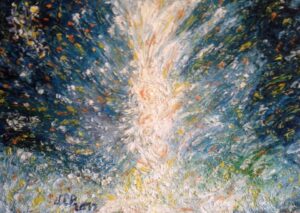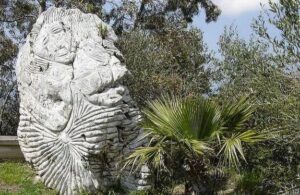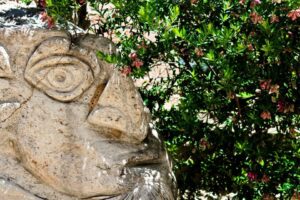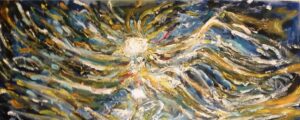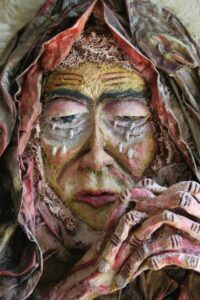
Mariano Pietrini, in his long pictorial career, has gone through different phases, influenced by life experiences, experiments and changes in his artistic approach.
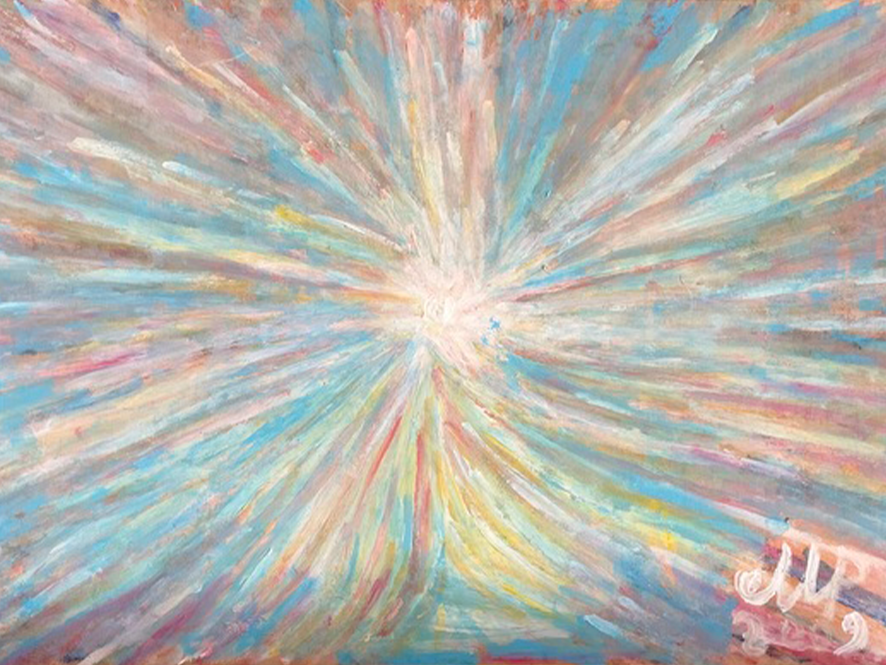
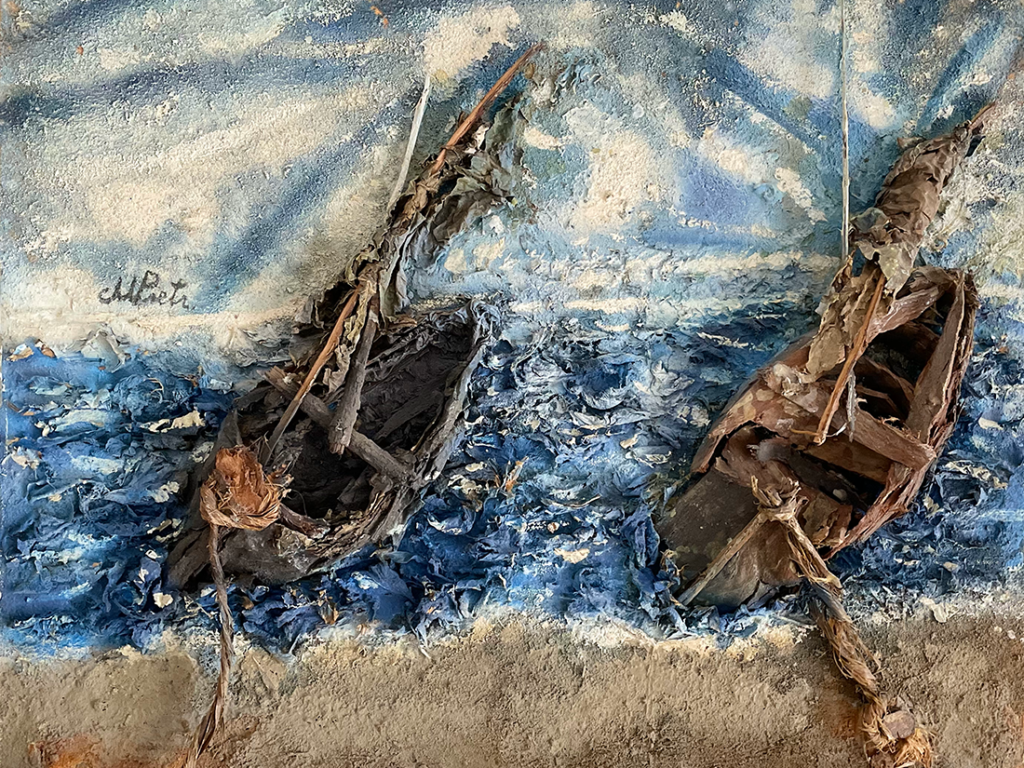
It all began towards the end of the 1960s, after a trip to L’Aquila, when Mariano embarked on his journey into the art of painting. His artistic career was characterized by countless sketches, studies and reflections, often crucial for the creation of his works.
Mariano’s first creations were abstract representations, collages of leaves, and natural materials on black cardboard. The prevailing tones were spots of color, mainly red. Subsequently, the transition from the abstract to the figurative manifested itself with representations of seascapes, trees in the wind, and interiors with domestic hearths, all composed of natural materials.
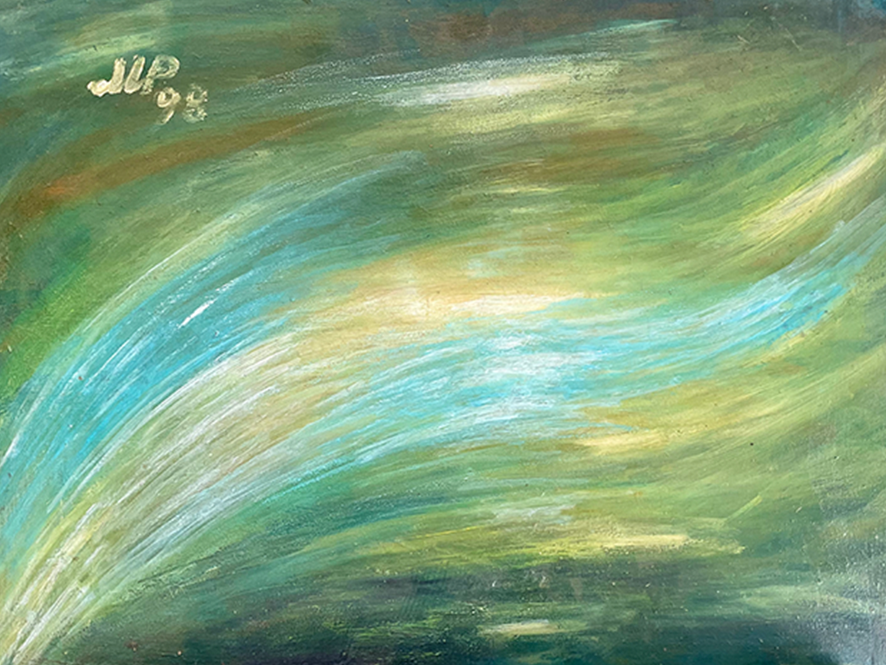
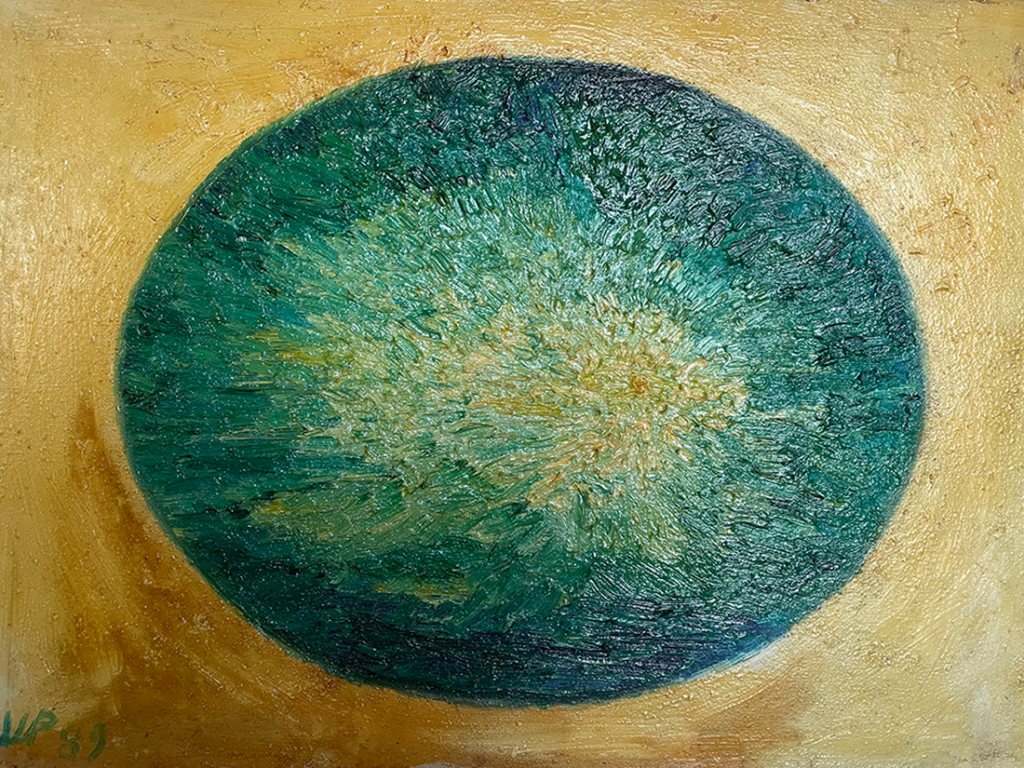
His love for Sicily and the inspiration drawn from impressionists such as Monet and Van Gogh led him to use the oil on canvas technique. His paintings came alive with flashes of yellow, red and deep blue, transforming into lively Sicilian landscapes with cultivated hills, rough and calm seas, boats and still lifes.
In the 1980s, Mariano embraced the three-dimensional with an innovative technique, often inspired by his social commitment. His involvement in the community for the recovery of drug addicts has left a profound mark, reflected in dark canvases that narrate the suffering and internal torment of young people seeking happiness in artificial illusion.
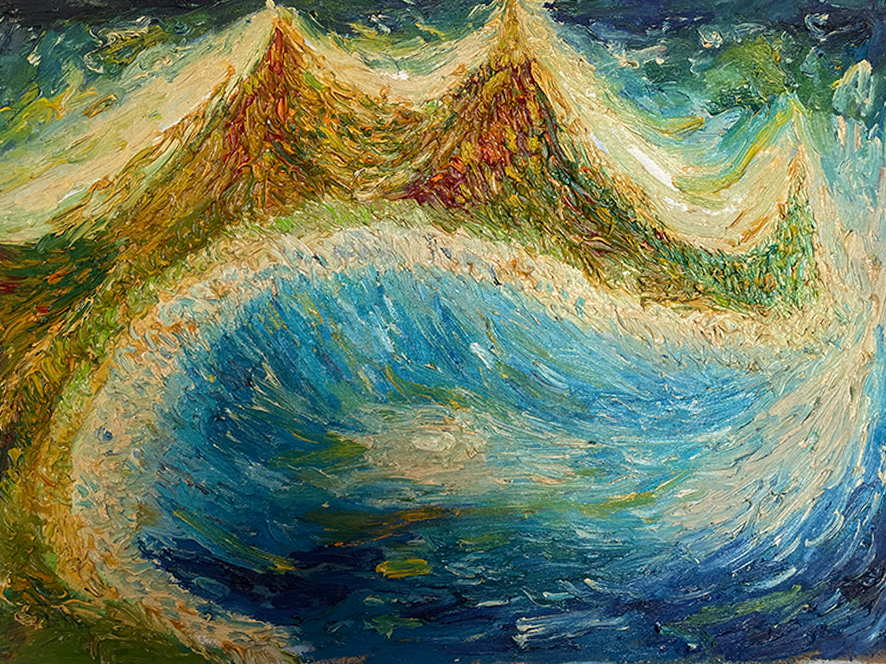
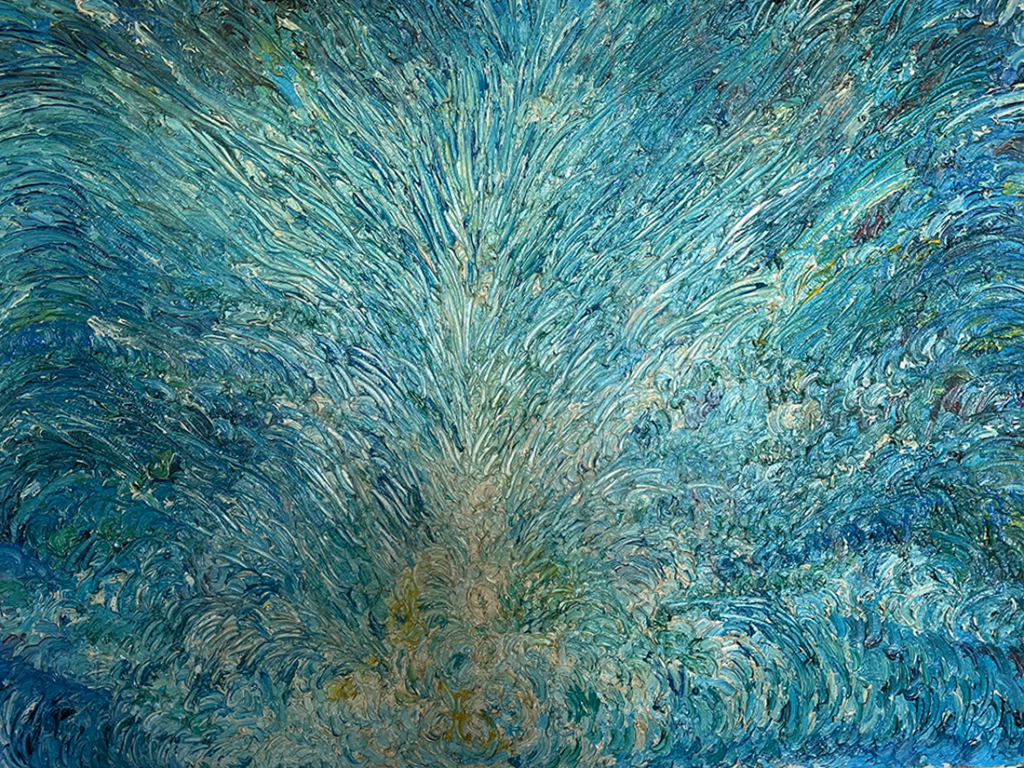
From this dark period a more positive vision emerged, with paintings depicting daily life, village festivals, erotic themes, innovative still lifes with real fruit baskets and moments of family affection.
Subsequently, Mariano returned to the abstract, playing with colors such as yellow and red in a bold brushstroke, then evolving towards shades of blues and greens, imagining terraces on an infinite blue.
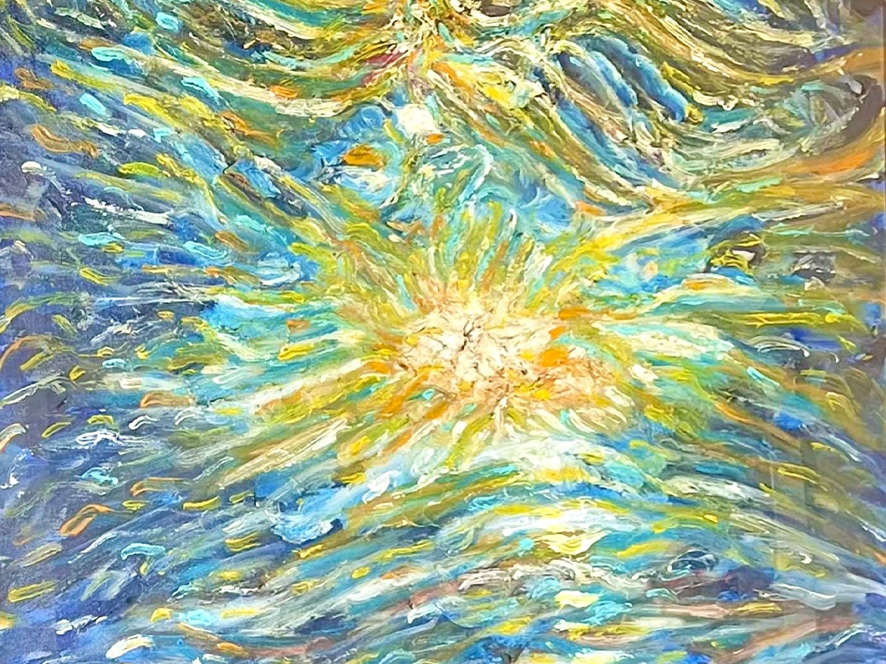
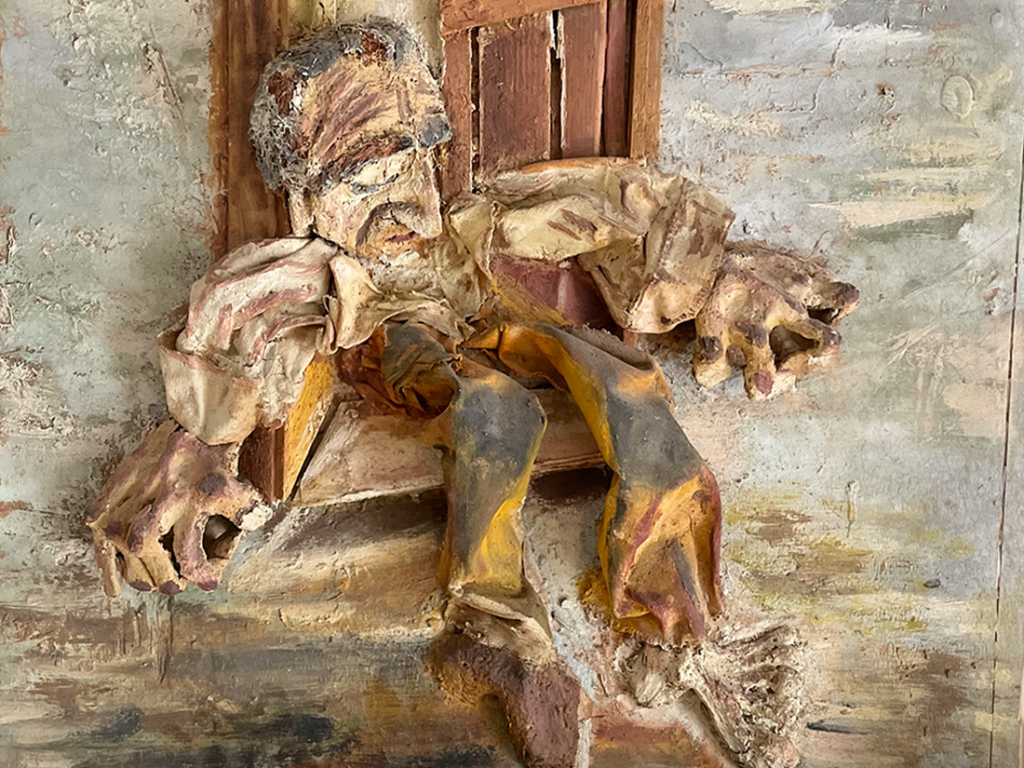
Today, even if Mariano Pietrini is no longer with us, his creative spirit and artistic legacy continue to live on through the works he left behind. In moments of reflection, we can contemplate the pictorial techniques that accompanied his life and that he was able to transform into other artistic forms, such as nativity scenes, jewels, and much more. His influence persists, inspiring those who approach his art and testifying to the extraordinary versatility of an artist who embraced multiple facets of creativity.
